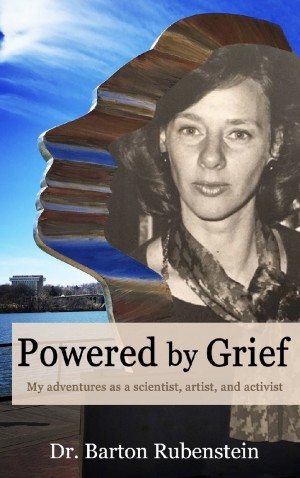In a note following the poems in Hills Full of Holes, Dan Alter writes, “For months following a car accident, while I was unable to process light and sound normally, I spent day after day hiking trails of shorelines and woods in the hills that overlook the East Bay Area.” Meandering through historical documents, formal innovation, and the healing process, the collection examines both personal and regional restoration.
The book is grounded in place — the name of an East Bay trail marks the end of most poems like a blaze on a path. The reoccurring series “Whose Woods” includes historic sources exploring the colonization of the area and then Alter’s erasures of these sources that reinforce how the colonizers’ narratives erased indigenous history. Explaining his process, Alter notes: “After I had recovered, working through my forest-bathing notebooks, I felt a need to see past the surface layer of these parklands, their strata in the current moment. What did they look like before European colonization, when they were home of the Lishane (Ohlone) peoples?” Each time the title “Whose Woods,” appears, it evokes both Robert Frost’s famous poetry line “Whose woods these are I think I know” and also the history of land conflict between the Lishane and colonizing groups. Alter implicates himself by including his family’s own settlement in the area: “we/arrived in the tide/of west-moving vans/to leafy streets named for seizers.” While arriving in “Berkeley’s/stucco slopes” seemed like “a perfect idea,” Alter notes his own culpability: “who knew the concrete/footings we asked/a bank for were poured/on top of dances”.
Formally, the poems unfold in switchback enjambments that pocket honeycombs of white space. The jagged poems evoke trails, and the pockets of space enact both historical erasure and the gaps in cognition and speech resulting from the car accident, recalling the work of poet Emily Rose Cole, which uses white space to enact multiple sclerosis lesions. The gaps also illustrate the title, suggesting the poems are hills full of holes. A result is the language seems not so much to progress toward a point but rather pool around one, as in “Poem with time & mildly injured brain”: “meridians slight-needled/neckbone probed or gazed into/with swivel whirr: worry a skullcap to keep not/taking off trying for miles/to heal by root-web grass sway.”
Other poems explore an ecological and formal “understory,” such as “Chaparral (‘the understory’) and “How can I,” which examines the tension between preserving forests and the livelihood of loggers: “ I’m thinking of the giant/California condor/no longer nesting, shy understory of redwood sorrel/& wake robin/bye bye. I’m not sleeping. I’m thinking of two men//pulling a 16-foot saw blade called misery to/& fro through an ancient base, their pores exuding/alcohol. Putting/as we do food on the table. Of their misery versus the tree’s.”
The drop lines create a formal “understory” beneath the canopy of longer lines, reminding us that these poems are ecosystems not only in theme, but also in the formal interdependence of line, space, and syntax.
While the collection’s historical and formal commitment provide the book with structure, it is the speaker’s raw surrender to the healing process that gives the book its emotional weight. The speaker lets us into the weary interiority of someone trying to relearn how to exist in a body — an interiority where even selfhood is exposed as an illusion. In “I fell,” the speaker tries to merge with nature: “ a trunk/I didn’t fit/a self I tried/to feel more like/a leaf.”
In “Are you coming to the farewell party,” the speaker becomes a shell of his former self: “ The rains/went on & I was kind of/ruins people visited/later // when those last/11 birds go back/inside the serrated/edges of their calls.”
As the title poem suggests, there is nothing more enlightening than going deep into nature, into history, into our own bodies and understories, until we are bleary with our own short flash in the larger picture: “deep in canyon/shade we did so many/things for an idea/we had about love.” There is a sense that the speaker’s time in the woods leads him to surreal limits (“Your purple eyespots glow like lamps/in cannabis, stare/like the price of gas”). Ultimately, however, trekking to these extreme edges where selfhood dissolves into the natural and historical world around it — while disorienting — is what ensures that we don’t miss the forest for the trees.
Allison Pitinii Davis is the author of Line Study of a Motel Clerk (Baobab Press, 2017), a finalist for the Berru Poetry Award and the Ohioana Book Award.





